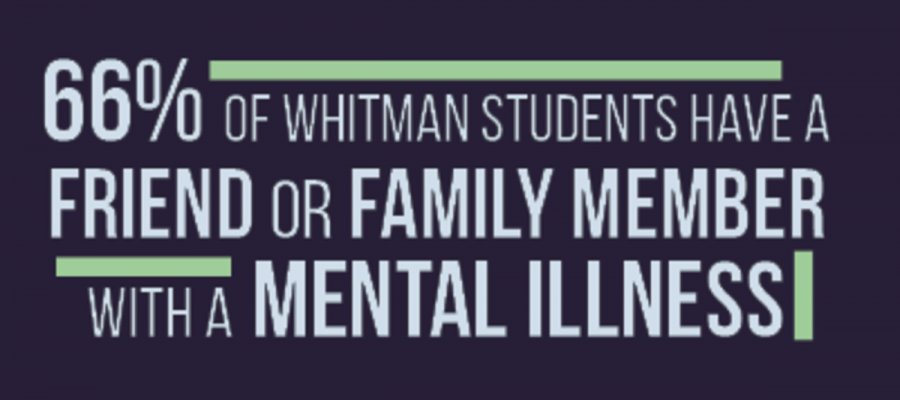Inpatient programs: students seek hospitalization to keep mental health in check
March 10, 2018
Patients’ names have been changed to protect their privacy.
Sarah’s admission to North Spring Behavioral Healthcare Center in December was surprisingly simple. After she expressed suicidal thoughts, Sarah, a sophomore, was admitted to Suburban Hospital, where a crisis counselor recommended she enroll in an inpatient program. From Suburban, an ambulance took her to North Spring, where she underwent several physical and mental examinations.
Her battle with mental illness, however, isn’t nearly as straightforward.
Some days, she feels invincible; other days, minor inconveniences trigger her anxiety and depression. But the bout of depression that led to her hospitalization was different: typically a motivated student, she couldn’t focus, participate in extracurricular activities or even get out of bed. What had initially been diagnosed as an anxiety disorder had become clinical depression, obsessive compulsive disorder and mood fluctuations. After she was admitted to Suburban, Sarah had no choice but to attend an inpatient treatment program.
“It just got to the point where there was nothing left to do other than go to the hospital,” she said.
Twenty percent of teens ages 13-18 live with a mental health condition, according to the National Alliance on Mental Illness. Some teens seek treatment by attending inpatient programs, where they receive 24-hour care at a residential facility. Many of these programs consist of group therapy, constant medical supervision and regimented schedule that provide much-needed treatment to adolescents and teens with severe mental illness or suicidal thoughts.
“If someone were wanting to hurt themselves or others, inpatient gets them to where that urge to harm themselves would lessen to the point where they wouldn’t want to anymore,” North Spring admissions officer Dave said.
24-hour Supervision
Sarah’s first day at North Spring was a blur; she vaguely recalls being carried in a stretcher to the facility, passively answering questions and meeting the 15 other patients. Despite their different backgrounds and family situations, they were all connected by a shared struggle: mental illness.
When Sarah arrived, the staff required her to remove her shoelaces, change into special clothes and give up her phone. In the mornings, staff gave patients dime-sized portions of toothpaste, shampoo and conditioner. At night, sensors surrounding patients’ bed detect movement, alerting staff when a patient shifts.
“Many patients who are in inpatient units have threatened to hurt themselves, or sometimes others, so constant observation is necessary, adolescent psychotherapist Anita Bryce said. “Patients need a structured environment due to the nature of the struggles that typically puts them in a position where they need such an intensive treatment.”
“There are a lot of little measures to make sure no one’s hurting themselves,” she said. “You can’t really bring a lot of things in. It’s a very strange environment to be in.”
Junior Nick also received inpatient treatment, first in eighth grade at an Adventist Healthcare program. During his freshman year, he returned to an inpatient program, this time receiving treatment at Brook Lane hospitalization program. The Adventist program focused on physical and mental examinations instead of therapy, and he often felt like he was “getting watched,” he said.
“The first one I went to was very medical. It was pretty cold,” he said. “There wasn’t much trust between people, and it felt like you were just getting observed.”
A patient’s length of stay at such programs can last from a couple days to several months. At the request of her Pyle counselor, junior Emily, then an anxious and depressed eighth grader, was admitted to the Children’s Hospital inpatient unit for a week and a half. After she was discharged from the program, she continued self-harming. One night, after she hit an artery when cutting, she went to Suburban Hospital to get stitches. From there, doctors recommended she attend Dominion Hospital’s inpatient treatment program for a month.
At most programs, patients follow a regimented schedule, often participating in group, family, art or music therapy daily. Visiting hours are limited, leaving some patients feeling isolated and lonely.
Prior to her most recent experience, Sarah also attended Dominion in sixth grade. Out of place and afraid, she felt trapped.
“I remember breaking down and crying and not knowing what to do. They put me in this quiet room and were just like, ‘you need to calm down,’” she said. “I guess that I wasn’t supposed to be distracting anyone else. That was just a really harmful thing for me. It was really horrible.”
Admission and Adjustment
Most patients are admitted to inpatient programs at the request of a psychiatrist, crisis counselor or social worker.
Because they’re underage, Sarah, Nick and Emily couldn’t refuse these requests. Nick, then an eighth grader, said he was too young to make his own decisions about his mental health.
“I was a tween, I was hormonal, I didn’t really understand my own feelings,” Nick said. “I think I would act different now because I know myself better.”
Nick remembers one patient who escaped from the facility by crafting a broken dresser handle into a sharp object. In less than six hours, staff returned him to the center, Nick said.
This behavior is extreme, however. Some patients form friendly—albeit complex—relationships with fellow patients. For the first time, Sarah was introduced to other teens who were also battling mental illness. This connection helped her form close friendships with other patients despite the restrictions on physical contact and private conversations imposed by the program.
For Emily, other patients influenced her in overwhelmingly negative ways. Many patients admitted for drug and alcohol addiction introduced her to the idea of self-medicating with drinking and drug use early on. If she hadn’t attended an inpatient program, she wouldn’t have experimented with drugs and alcohol after she was discharged, she said.
Other patients’ behavior influenced her, causing her to mimic their destructive actions.
“A lot of the boys were admitted for anger issues instead of depression. From staying there and being with those personalities, it kind of rubbed off on me. I had some anger issues when I got out, and it kind of stuck with me,” Emily said. “If you’re in an environment with someone for so long without going outside, they’re all that you have, so you kind of adopt some of their behaviors.”
Still, Emily credits the programs with shaping who she is today, she said.
“The programs gave me a greater perspective on life. I met a lot of people with similar issues,” she said. “At Pyle, everyone was young, so I didn’t really have anyone to talk to. Looking back on all of my experiences, I’m glad that I did go through that because it’s given me this experience that not a lot of people have, and without it, I wouldn’t be the person who I am today.”
Impact on Family and Friends
While mental illness has a direct impact on a patient, it also has an indirect—nevertheless difficult—impact on family and friends. For those in inpatient programs, this is often amplified by a patient’s separation from family and accompanying guilt, Nick said.
Emily’s time at both programs strained her relationship with her parents, causing her to rely on her sister for support, she said.
“It’s always hard to see your child suffering so much, and they were always very supportive, but at the time I was being my angsty teenage self and pushing them away,” she said. “It was really hard for my sister because she was the one who I went to talk to all the time, so there was a huge burden on her to make sure I was okay all the time.”
Sarah’s time at North Spring strengthened her relationship with her mom, who visited her every night, bringing her food and letters from family and friends, her mother said.
“It was a difficult time as we were all so worried about [Sarah]. We put everything else on hold so we could be there for visiting hours and for [her],” Sarah’s mother said. “I think her hospital stay has brought us closer, and I think we’re learning how to be more empathetic parents,” her mother said.
Life After Inpatient
Inpatient isn’t a cure for mental illness, Emily says, and no program, medication nor therapy can entirely eliminate her anxiety and depression. Still, her experiences with inpatient programs have taught her coping mechanisms to make daily life easier, and she continues to take the medication the Dominion staff put her on in eighth grade.
Nick has learned to view his mental illness not as a burden, but as a component of his life that he must acknowledge and manage.
For Sarah, her most recent stay at North Spring kept her safe at a time when she was a danger to herself. Her depression and anxiety are constant, but the programs have taught her methods to keep them in check and to be cognizant of the problems others are facing, she said.
“I’ve always believed that you never know what people are going through, but this really made me believe that. Being there made me realize that mental illness isn’t just something that you can get over, and you can’t really let it slide and pretend it’s not there,” she said. “It’s important that you take care of yourself. It can make people feel very weak, but taking care of your mental health is probably one of the best things you can do for yourself and other people around you.”
If you or someone you know is struggling with a mental illness, reach out to a trusted adult or counselor, or contact the following:
National Suicide Prevention Lifeline: 1-800-273-8255
Montgomery County 24 Hour Crisis Center: 240-777-4000










